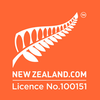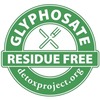
Raw Monofloral Manuka Honey KFactor 16
Made exclusively by bees that feast on the nectar of New Zealand’s wild Manuka flowers, our raw Manuka honey is one of Mother Earth’s rarest gifts. Wedderspoon are committed to comprehensive Manuka honey integrity, with every batch fully traceable from our South Island hives to your home.
We guarantee that the raw Manuka honey in this jar is as close to freshly harvested perfection as possible, brimming with living enzymes & phytonutrients and a taste that can't be beat. Never subjected to high heat processing, our honey is independently tested to meet or exceed the Monofloral Manuka standard set by the government of New Zealand. Triple-filtered & gently creamed for rich, smooth flavor straight from the spoon, we hope our Manuka honey empowers you to ‘bee’ your most vibrant self.
Our favorite ways to use Manuka? As a daily energy boost, for home 'remedies', pre- and post workout, for beauty applications, and as a better for you sweetener!
Free of antibiotics, pesticides, and glyphosate.
INGREDIENTS: RAW MONOFLORAL MANUKA HONEY

















